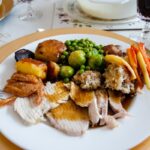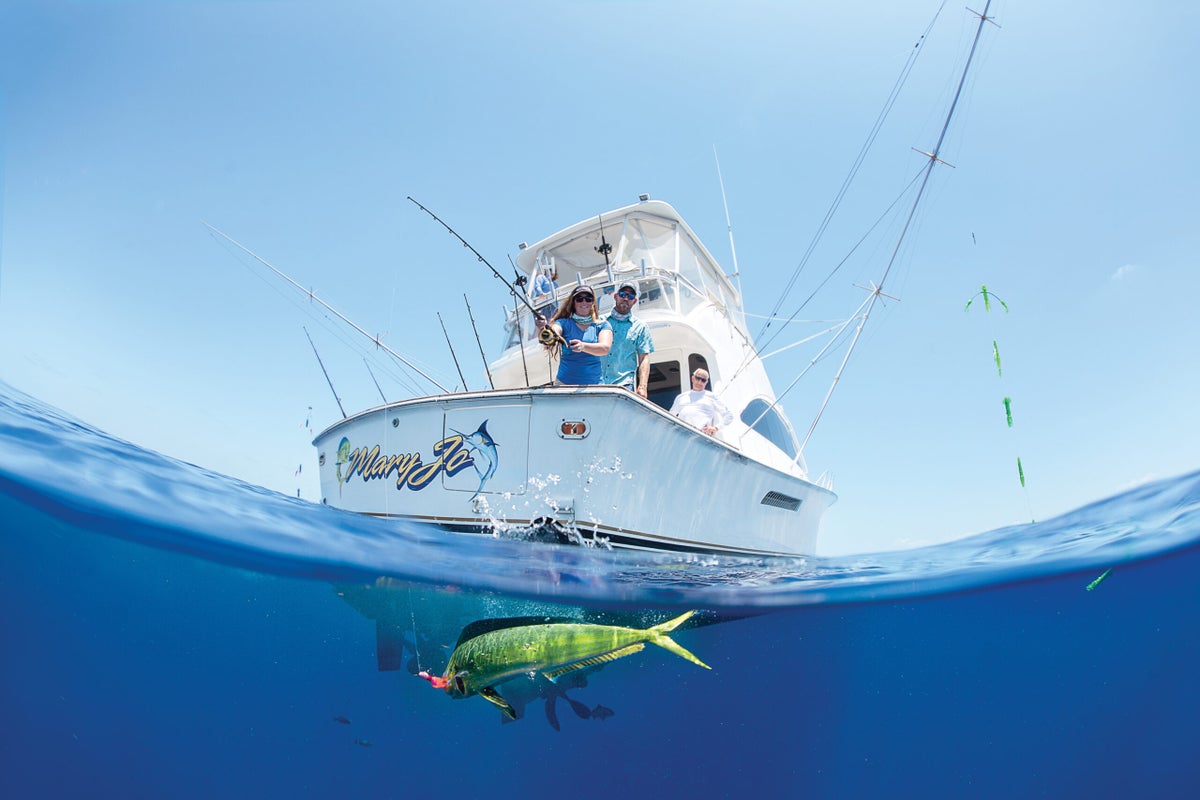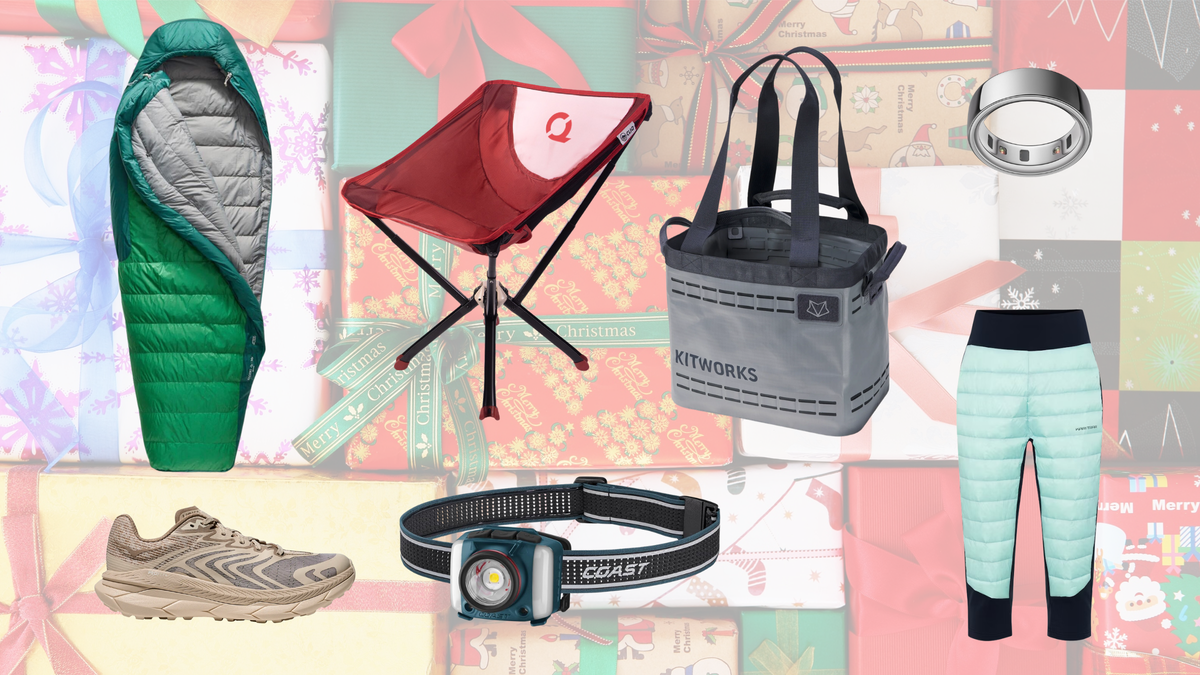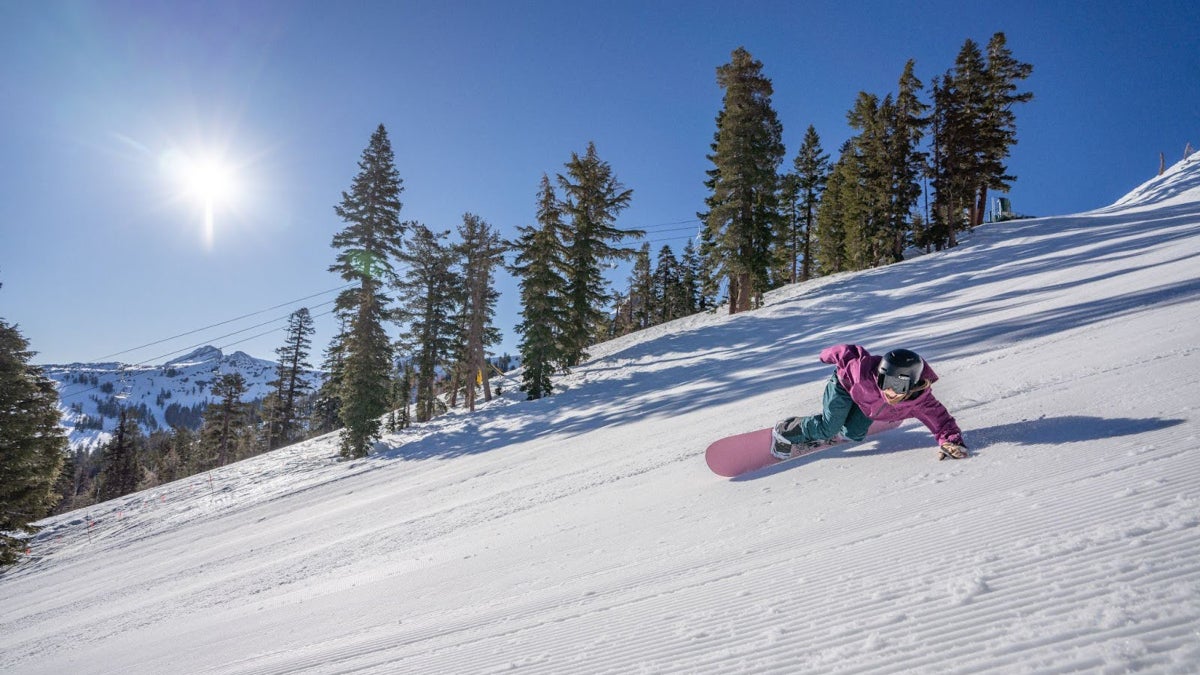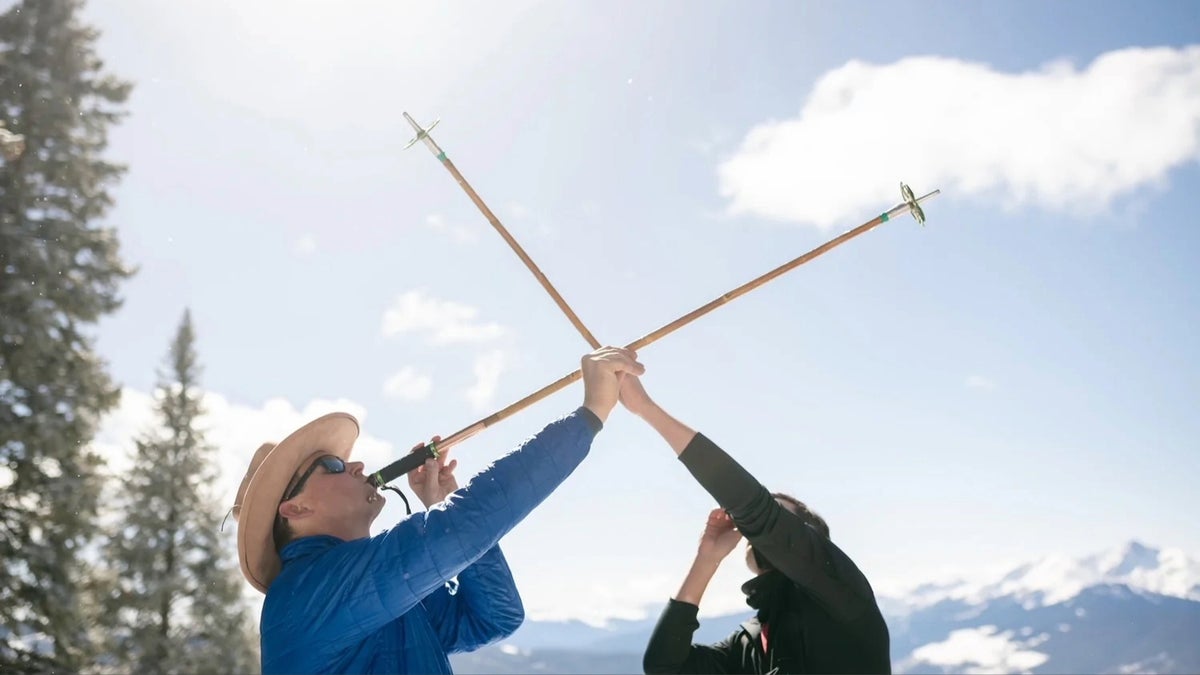
My favorite spots to fly fish offer more than just abundant trout or salmon; I love being surrounded by the majesty of a place, be it the grandeur of the Rockies or the quiet beauty of a Midwestern oak forest.
Those locations also lend themselves to other outdoor pursuits. I fill my day as if I were ordering à la carte adventures off a take-out menu. I’ve spent days biking the hills and mountains of North Carolina, only to ease my aching legs into a cold flowing river with a fly rod in my hand. I’ve hiked multiple miles through Montana forest with my fly rod jutting out from my backpack en route to a lake supposedly teaming with trout.
(This seems to be a good place to make a public service announcement for all the readers out there. If you see a soaked and glowering person stomping out of the woods with a fly rod sticking out of his bag, never ask: “Did you catch anything?” Seriously, read the room.)
Perhaps most importantly, having an abundance of options can help save your relationship. It’s a dilemma that most fly fishers know by heart: you want to spend the weekend casting a dry fly into a creek, however, your significant other wants to hike, paddle, or do anything else but fishing. Here are seven of my favorite places where everyone can be happy.
Juneau/Tongass National Forest, Alaska
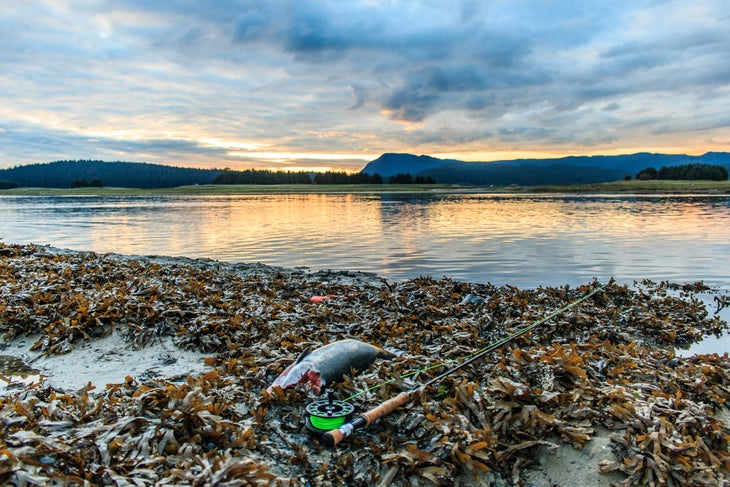
Best time to go: Summer (The king season starts June 1 and tapers off around July 14. Cohos start early July and run through September.)
Fish species: King salmon, pink salmon, rockfish, halibut
Potential other adventures: Hiking, kayaking, bear viewing
Alaska is practically synonymous with salmon fishing, and there are few better places to fill your cooler than the waters surrounding Juneau. Recently, I tagged along with guides Jared Markovich and Tel Kennell of SEAK Outfitters as they were scouting potential new fishing spots. We anchored in Barlow Cove, where small, unnamed salmon-bearing creeks flow into the cove. Seemingly every few seconds, pink salmon were jumping out of the water all around us. After trying a couple of different streamers with little success, we tied on a fluorescent chartreuse version and cast into the water. The fish jumped on that fly like it it was on a can of Old Style beer.
Markovich also runs a processing business, where he will filet, freeze, and box your catch to either ship home or take on the plane with you. Having brought home several pounds of halibut, rockfish, and salmon that I caught, I can say that eating wild fish that you caught yourself tastes so much better than what you can buy in a supermarket.
At nearly 17 million acres, Tongass National Forest offers plenty of activities for non-anglers and families. Visitors will find about seven miles of hiking trails of various difficulty around Mendenhall Glacier. (Visitors can no longer hike on the receding glacier itself due to the risk of falling into a crevasse.) If you’re really looking to stretch your legs, the nearby 13-mile Treadwell Ditch trail system can be accessed by hikers and mountain bikers alike, who will be rewarded with gorgeous views of both Douglas Island and mainland Juneau. Both black and brown bears frequent these areas, so be sure to bring bear spray.
Central Oregon

Best time to go: Spring through Fall
Fish species: Rainbow trout, steelhead
Potential other adventures: Hiking, mountain biking, road cycling, paddling, camping
The Deschutes River is one of those bodies of water spoken about in revered tones by fly fishers, like Montana’s Yellowstone River or the Delaware River in New York’s Catskills. So when I had my opportunity to fish it myself, I was absolutely thrilled. Driving to our put-in at Warm Springs, Fly Fisher’s Place guide Troy Leedy warned me it wasn’t going to be easy.
“It’s a tough river,” Leedy says. “Fish here are constantly pressured [by other anglers], so you need to present the fly perfectly to have a chance at hooking one.”
Oddly enough, anglers aren’t allowed to cast from the boat on the Deschutes; state law dictates you must cast standing in the water or on shore. (The Deschutes is the only river in Oregon with that prohibition.) This meant we were passing a lot of prime, fishable river on our way to holes shallow enough to wade. We stopped maybe a half-dozen times for 20-minute or so stretches. Tossing the nymph rig into the water, I worked various drifts until I’d either exhausted the water or the indicator dipped below the surface. I was happy with the four fish I caught that day—two whitefish and two small-ish rainbows—but the sight of a massive steelhead leaping from the water and off my hook will haunt me for the rest of my life.
Fly and Field Outfitters guide Glenn Sherman took me to Crane Prairie Lake in Deschutes National Forest. We made our way to a spot where a river emptied into the lake, where rainbows were likely to be congregating. The first hour didn’t go so well as the gusting wind made casting much more difficult. After seemingly every cast, my dry-dropper rig was a bird’s nest of monofilament and pheasant tail nymphs. But as the wind calmed and we switched out the bottom nymph for a small wiggly worm fly, massive rainbows began attacking. In my years of fly fishing, I think these trout were among the most fierce fighters I’ve come across. By the time I reached double digits for the day, my back and arms felt as if I’d gone multiple rounds with an MMA fighter, but I couldn’t stop smiling.
Nearly all of Oregon is an outdoor lover’s dream, but the middle slice of the state is particularly beautiful. Newberry National Volcanic Monument is a geological marvel. A fun, short hike through western larch and ponderosa pine forest will lead you to Benham Falls. Mountain bikers have more than 900 miles of singletrack in the surrounding area to choose from.
Central Michigan

Best time to go: Spring through Fall
Fish species: Brook trout, brown trout, rainbow trout, steelhead (later in the year)
Potential other adventures: Hiking, camping
Both Ernest Hemingway and Jim Harrison fell in love with fly fishing in Michigan. There are so many incredible rivers in the state, both in the Upper Peninsula and the central region, where you’ll find the Pere Marquette, my personal favorite. The Pere Marquette stretches more than 60 miles west to east through the Mitten State, with the holy water section flowing through the town of Baldwin and Manistee National Forest.
During my most recent visit, I tried a combination of dry flies and nymphs on 5x and 6x tippet and did fairly well considering how finicky these native trout are. Supposedly, you can catch some whoppers in this river, but the largest I’ve managed may have only been eight to ten inches. (That may be more of an indictment against my fishing ability than the size of the fish in the river.)
You can wade a lot of the river, but some sections are too deep much of the year, especially when your fishing buddy is 5’5”. (Sorry, Jimmie!) The local 1884 Fly Shop (named after the year British brown trout were introduced into the Pere Marquette) should be able to give you a heads up, or you can use an app like Trout Routes. Some of the best holes are only a short hike from the national forest campgrounds if you want to make it a multi-day trip. I used a 5wt Orvis Clearwater rod when I’m fishing for trout here, but you can get by with a 3wt or 4wt.
Further to the west, visitors can enjoy more hiking trails in the national forest and state parks along the coast of Lake Michigan. (The trails in Ludington State Park will take you through forest, past small lakes, and eventually to a picturesque Lake Michigan lighthouse.) You’ll find plenty of hiking and paddling options, in addition to beaches and lighthouse viewing opportunities.
Western North Carolina

Best time to go: April-May and October-November
Fish species: Brook trout, brown trout, rainbow trout
Potential other adventures: Hiking, mountain biking, gravel riding, road cycling, paddling
The first time I ever attempted to cast a fly, it was on a fast-flowing tributary river to the French Broad in Hot Springs, North Carolina. It went so poorly that I didn’t pick up a fly rod again for four years. I returned to the state this spring, months after Hurricane Helene had devastated the area. Basing myself in Maggie Valley, I spent a few days on the Pigeon River and Cataloochee Creek, curious about what effects the floods had on the fish populations. I’m happy to report that the fly fishing was amazing.
Western North Carolina boasts a wealth of terrific trout water, including the Davidson and Watauga Rivers; the state ranks in my top three east of the Mississippi when it comes to fly fishing. A 5wt rod is great for most situations, but a 3wt or 4wt will work as well. Visitors can pick easily accessible, wide, flowing rivers or tiny creeks that require a fair hike.
The Pigeon River is stocked throughout much of the year, and I had great success with a little mop fly tied by our guide, Josh Seabolt, with Maggie Valley Fly Shop. On our first day, I stopped counting after landing the first couple dozen trout. But the wild brookies in nearby Cataloochee Creek are wily bastards that are so satisfying to catch. I used a nearly microscopic pheasant tail nymph on 7x tippet and had to match my drift perfectly to even get the slightest nibble.
If you can tear yourself away from the fishing, the surrounding lush landscape is practically begging you to lace up your hiking boots or toss a leg over a bike saddle. Hot Springs is a popular stopover for Appalachian Trail hikers, with tons of other, much shorter hiking options in nearby Pisgah National Forest. Likewise, you won’t find a better place to ride a skinny- or fat-tire bike. The gravel ride up to Max Patch, a 4,629-foot mountain bald 20 miles from Hot Springs, was always the highlight of our rides thanks to the incredible views of the entire valley at the top.
Rocky Mountain National Park / Estes Park, Colorado
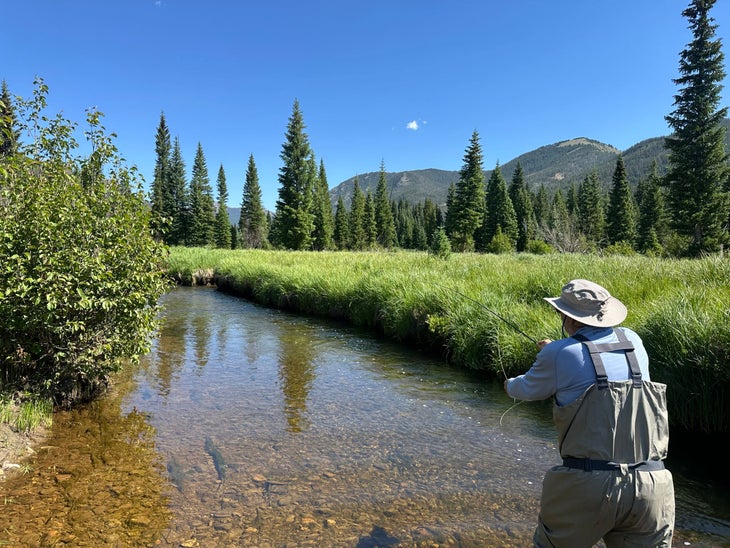
Best time to go: Summer (Mid-June to August)
Fish species: Brook trout, brown trout, rainbow trout, and four different kinds of cutthroat trout
Potential other adventures: Hiking, wildlife viewing, photography
When Sasquatch Fly Fishing guide and owner Joe Croteau claimed Rocky Mountain National Park has the best fly-fishing in a national park, I felt my head shoot back in shock. That was a bold statement; I’ve personally had some epic days in various parks, so I was skeptical. But as he spoke, he made a compelling case. Turns out he literally wrote the book on fly fishing in the park.
“If you’re looking for a wide variety of [trout] and easy access to 20 or more creeks and rivers, all packed in a neat little space,” Croteau says, “then come to Rocky Mountain National Park.
“It’s a dry-fly angler’s paradise,” Croteau continued. “You’ll probably want to go nymphing in some of the larger drainages, but once you hike in about a half mile, the dry-fly fishing will be off the hook.” (I assume he meant that metaphorically.)
Rocky Mountain National Park doesn’t get as much love as Yellowstone or Glacier because the average brookie is only about eight to ten inches, Croteau says, but if you’re willing to do a short hike or two, you can land some true lunkers. Most of the creeks are fairly narrow, so bring an 8.5-foot, 4wt rod or maybe even a 3wt.
The scenery makes it an amazing place not only to fly fish, but to hike, paddle, and view wildlife. (Just beware of moose.) Every visit to Estes Park, I’m amazed by how the park appeals to all the senses. The last time I was there, I was serenaded to sleep by chittering green-tailed towhees and bugling elks. Heading higher in elevation, the air both smells and feels different as you breathe it in. You have more than 350 miles of hiking trails to explore the park and expand your own senses. Most of the park’s lakes offer a tranquil paddling experience, as well as an opportunity to hook into a whopper rainbow.
Glacier National Park
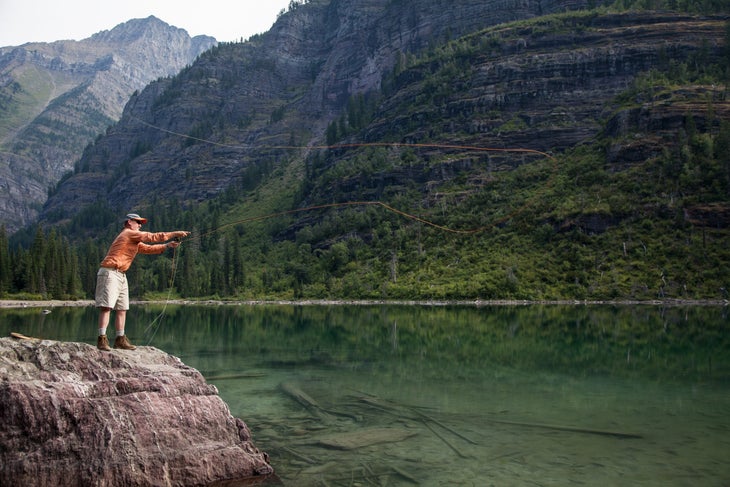
Best time to go: Mid-to-late June through October
Fish species: Cutthroat trout, brown trout, lake trout
Potential other adventures: Hiking, road cycling, paddling
Glacier National Park may be the most stunningly beautiful place I’ve ever visited, with its towering mountains, crystal-clear lakes, and forests filled with lodgepole pine and western hemlock trees. It’s also one of my favorite spots to go fly fishing.
Last summer, I fished the middle fork of the Flathead River with a guide from Glacier Anglers and Outfitters. Floating downstream, we passed dozens of wading fly anglers who looked just as awestruck by the surroundings as I was; I don’t know how many takes I missed because I was dumbstruck, staring at the mountains. I don’t remember exactly how many cutthroat hybrids and rainbow trout I caught on that trip, but it was more than enough to keep that euphoria going the rest of the day.
You can spend a month in the park and still not exhaust everything there is to do in Glacier. Try to kayak Lake McDonald on a morning when the lake is perfectly still and reflecting the surrounding mountains. (Be sure to make noise as you’re hiking and carry bear spray!)
Florida Keys
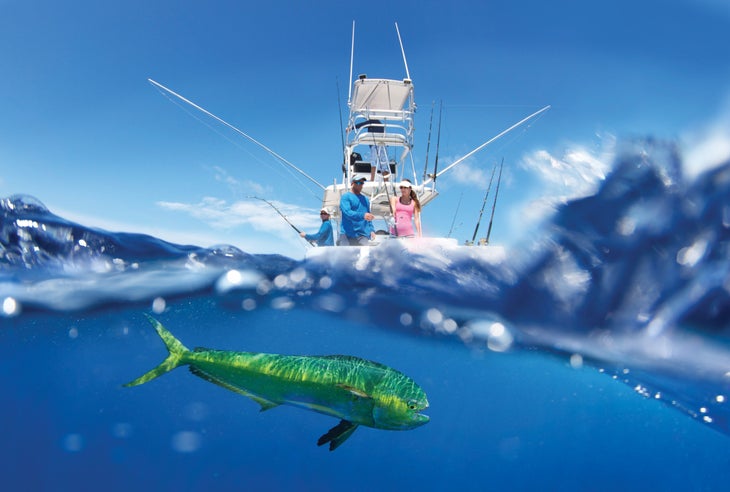
Best time to go: Spring (April to June)
Fish species: Tarpon, bonefish, redfish, permit, jack
Potential other adventures: Scuba diving, snorkeling, kayaking, wildlife viewing
The self-proclaimed sportfishing capital of the world, the Florida Keys, attracts both huge saltwater species and obsessed fly fishers in massive numbers. Although I’ve not yet fished the Keys myself (I’m heading there this coming spring), I know several fly anglers who have. Nearly all of them say it ruins fishing virtually anywhere else in the country. It’s that amazing.
Picture yourself in the front of a flat-bottom skiff when you see a school of migratory tarpon swimming in the impossibly blue, crystal-clear 7-foot shallows. You cast the streamer toward the fish, and as you’re stripping it back in, it’s followed by a massive tarpon. When it chomps the fly, you strip-set the hook and begin the battle. Unfortunately, beginner saltwater anglers have the deck stacked against them, says guide and captain Ted Wilson.
“Most times when a beginner hooks a tarpon, they end up losing it because it’s so exciting, they forget everything they’ve ever learned [about saltwater fly fishing],” Wilson says. “When everything is said and done, their knees are shaking from the experience; it’s so intense.”
Wilson suggests newcomers to the Keys focus on redfish or smaller baby tarpon sheltering in the mangrove islands throughout the shallows, as they’re “pretty ravenous and much easier to catch on the fly.” You’ll want a 9wt fly rod for the vast majority of the fishing, saving the 10wt or 12 wt for the 100-pound or larger tarpons. Casting distance and accuracy are crucial; being able to cast at least 40 feet puts you in a position to catch most saltwater fish, but a cast of 75 feet or longer will give you the best chance at catching a large tarpon or the ever-elusive permit.
Although the spring is widely considered to be the prime season for tarpon, Key Limey owner and guide Tony Murphy says that, thanks to climate change, the Keys are now a year-round fishery.
“October and November have virtually no boat traffic and no pressure on the fish,” Murphy says. “It’s a great time to fish for bonefish or the smaller resident tarpon.”
While you’re attempting to land your trophy fish, your family or significant other is literally surrounded by aquatic opportunities for fun. Seemingly endless options for swimming, snorkeling, and scuba diving abound, not to mention paddling or wildlife viewing. If they’re not interested in any of those options, there’s always the beach.
The post The 7 Best Fly Fishing and Multi-Sport Adventures in the US appeared first on Outside Online.







